Updated on October 4, 2025 by Angelika Klein
In today's 12 of 12, I'm taking you to Tübingen, one of the most beautiful cities in Baden-Württemberg, which is also becoming increasingly popular with tourists. Today, with summer temperatures, many punt barges with cheerful students and tourists on board. My way from the Neckar parking garage (very conveniently located for exploring the old town if you come by car) leads me directly to the Eberhardsbrücke, where the colorful flower boxes on the bridge railing immediately catch my eye. A group of Asian punters - apparently a choir - happily sing a song that is sung along by the bridge visitors and the Neckarmüller brewery's terrace guests.
Alongside Heidelberg and Freiburg im Breisgau, Tübingen is the best-known university city in Baden-Württemberg. The Eberhard Karls University was founded in 1477 at the instigation of Count Eberhard im Bart and is one of the oldest universities in Europe. With around 28,000 students and around 90,000 inhabitants, Tübingen is one of the youngest cities in Germany, with an average age of around 40 years. The town is picturesquely situated in the Middle Neckar Valley between Black Forest, and Swabian Alb, about 45 km from Stuttgart.
Tübingen sights - map for your city walk
For the city walk of Tübingen described in this article, I have created a map for you with Google My Maps. Just save the map to your cell phone to use it for your own discovery tour. I explain how to do this in my detailed blog post Planning a route with Google Maps.
A Feast for the Eyes: Neckarfront, Hölderlin Tower and Platanenallee
Tübingen's most popular photo spot is probably the Eberhard's Bridge (Eberhardsbrücke), where you have a magnificent view of the Neckar front. The small yellow tower at the end of the row of houses next to the river, is the Hölderlin Tower. Friedrich Hölderlin, one of the most famous poets of his time, lived in this tower, which is one of the most famous literary memorials in the world, from 1807 until his death in 1843. Discharged from Tübingen University Hospital as incurably mentally ill, the family of Tübingen carpenter and Hölderlin admirer Ernst Zimmer took the poet in as a member of the family.
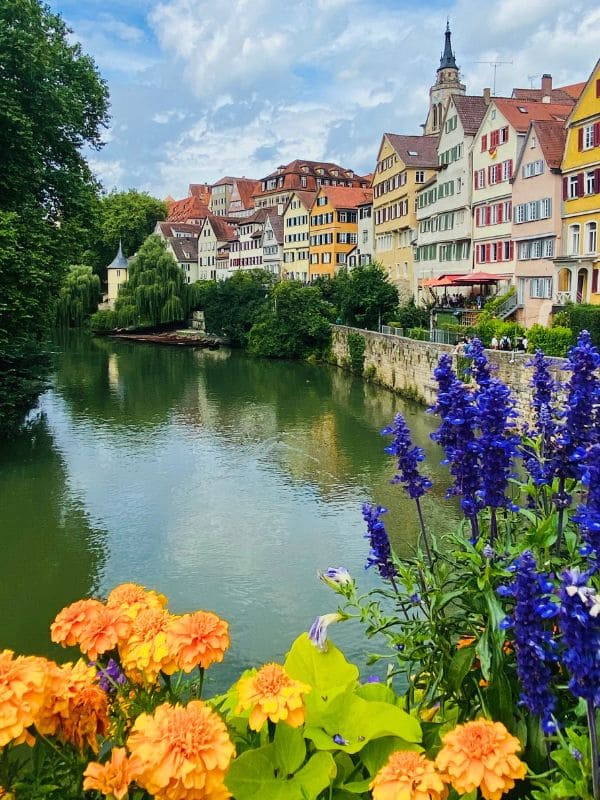
After a walk along Platanenallee on the Neckar island (where I took this article's featured image), I walk along the Zwingel – a narrow footpath on the Neckar front – to the Hölderlin Tower and visit the museum, which doesn't charge admission. I learn lots of interesting facts about the poet's life and his very special poetry. Hölderlin's only surviving piece of furniture, a small desk, stands in the tower room with a beautiful view of the green Neckar island. Hölderlin was lucky in misfortune, I think to myself, in these beautiful surroundings and with the caring Zimmer family.
How about a road trip across the Swabian Alb?
In my article about the most beautiful road trip routes in Germany I have a Tour across the Swabian Alb in three variants for you.
Many Excursion and vacation tips for the Swabian Alb you can find in my comprehensive guide about the Highlights of the Swabian Alb.
On the Trail of Poets and Thinkers: Tübinger Stift
After visiting the Hölderlin Tower, I walk past the Alte Burse up the Klosterberg to the Protestant Tübinger Stift, where Hölderlin studied theology at his mother's request. The former Augustinian monastery was converted into an academy for Protestant theology students after the Reformation in Württemberg in 1534. In addition to Hölderlin and his fellow students Hegel and Schelling, also Uhland, Mörike, Kepler and Hauff completed their education here. Women have been allowed to study here since 1969.

Cultural Treasures at Hohentübingen Castle
I continue along the Burgsteige to the Hohentübingen Castle – not a long way, but the hot and humid air today feels almost tropical ....
Tübingen Castle was built in the 16th century on the remains of an old palatine castle. You enter the castle complex through the Lower Castle Gate (Unteres Schlosstor), which is considered a masterpiece of the Renaissance. It was built at the beginning of the 17th century according to designs by Württemberg court architect Heinrich Schickhardt .
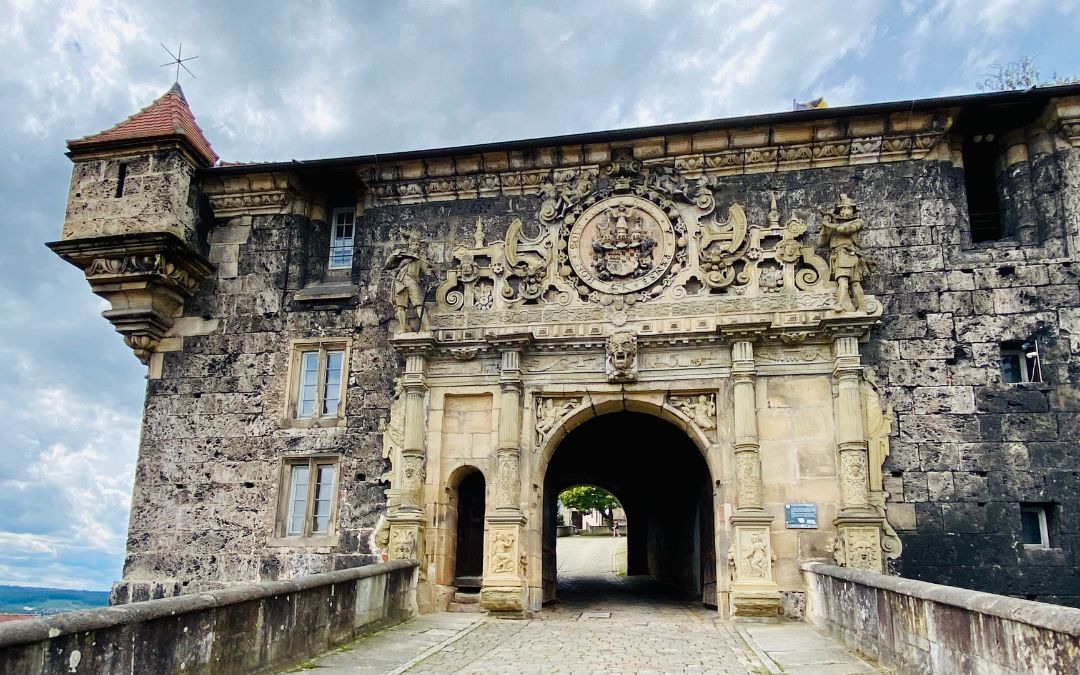
The university took over the first rooms in the palace as early as the middle of the 18th century, and in 1816 King Wilhelm I of Württemberg transferred the entire palace to the university, which used it to house the Museum of Ancient Cultures (Museum Alte Kulturen) Objects from the university's teaching collections are on display here, including coin collections, an Egyptian burial chamber and finds from Troy. The 40,000-year-old Vogelherd figurines (mammoth ivory figurines and fragments of bone flutes) are the oldest surviving works of art known to mankind. They were found in the Vogelherd Cave in the Swabian Alb, one of the six caves that are part of the UNESCO World Heritage Caves and Ice Age Art of the Swabian Alb .
The castle cellar is home to the allegedly oldest preserved giant wine barrel in the world dating back to 1549, which has even made it into the Guinness Book of Records. However, it can only be visited in winter due to a colony of bats living in the castle cellar.
The former observatory on the bastion, built in 1814, fell into disrepair after the death of its builder, the astronomer and mathematician Johann von Bohnenberger, and was forgotten until scientist Alfons Renz rediscovered the original device in the inconspicuous building in 2002.
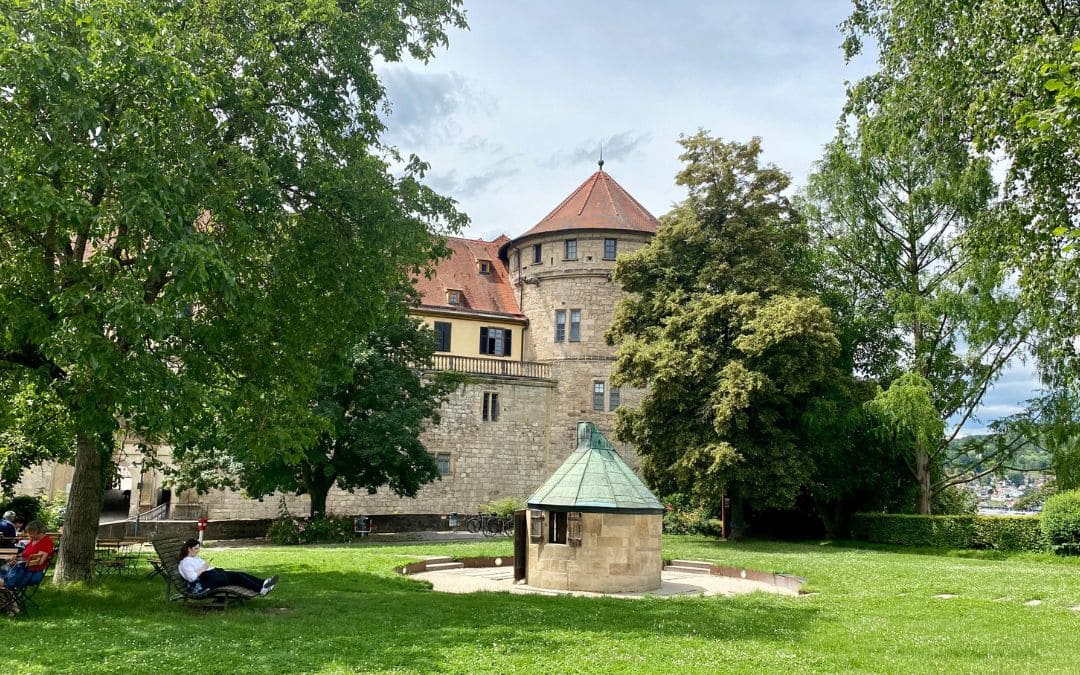
I take a walk around the castle garden, as it offers wonderful views of Tübingen's old town and the Neckar valley. The castle garden now also has a mobile French café, which invites you to take a break in the greenery on nice days.

Market Square and Town Hall: The Heart of the Old Town
But I move on towards the old town, down Burgsteige. In the Wienergässle, I catch a glimpse of the richly decorated City Hall which is the highlight of the beautiful market square. It was originally built in 1435, but was rebuilt and extended several times. Johannes Stöffler's astronomical clock in the gable was added in 1511, while the sgraffito painting was only added in 1876 to mark the 400th anniversary of the University of Tübingen.

But the market fountain is also a splendid specimen and a popular photo spot - in the background, of course, is usually the town hall, but today there are cars in front of it that I don't want to photograph.
The Neptune Fountain was designed in 1617 by Württemberg court architect Heinrich Schickhardt and made of sandstone. As it was badly weathered, the shell limestone trough was renewed in 1947 by the Tübingen sculptor Heinrich Krauß, while the column with the Neptune figure was reconstructed by David Fahrner from Freudenstadt from the metal of melted-down weapons.
During my coffee break on the market square, it starts to rain and I have to flee from the terrace into the interior of the café. Fortunately, it's only a short, heavy shower.
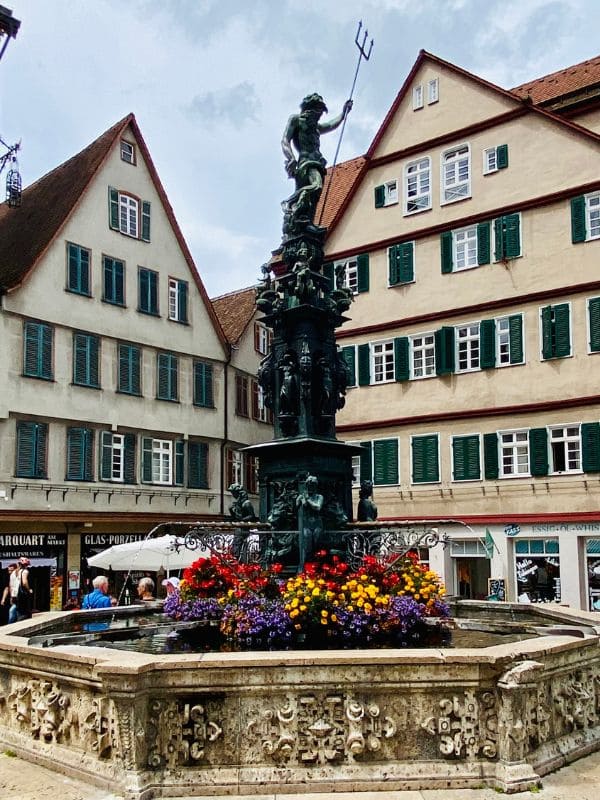
Old Town Idyll between the Neckar and Ammer Rivers: Kornhaus, Ammergasse and More
My big tour of the old town takes me further down Marktgasse to the Kornhaus (granary), which today houses the city museum, to the Krumme Brücke ("crooked bridge") and to the Ammergasse, to the Salzstadel (salt barn), to the Jakobuskirche (St. James' Church - which is a stop on the Way of St. James to Santiago de Compostela), to the Fruchtkasten (fruit box - today the citizens' office) until Nunnery. The listed half-timbered house was built in 1488 as a ladies' convent and, at 30 meters long, is one of the largest half-timbered houses in Tübingen. The Ammerkanal runs through Tübingen's old town and contributes to the picturesque appearance of many lively corners.
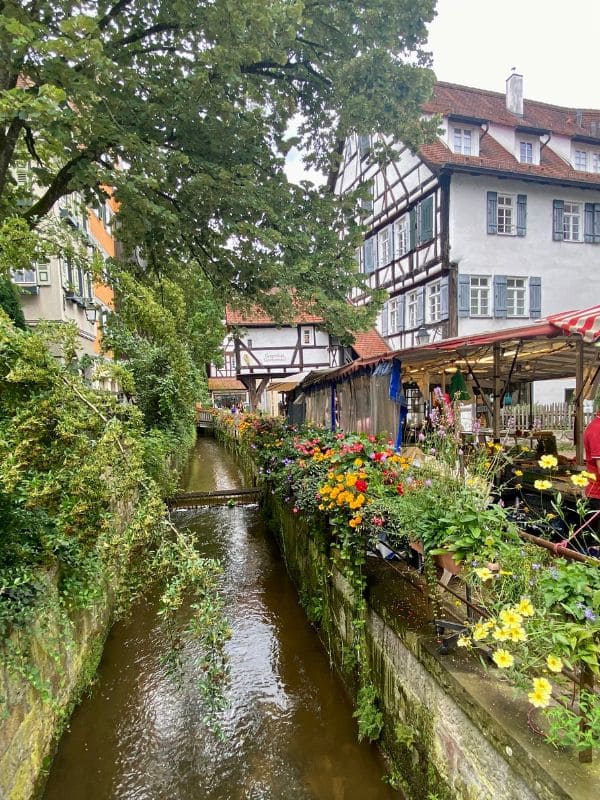
Through Neue Straße I walk back in the direction of the Neckar and turn into Collegiumsgasse which, like many alleyways in Tübingen's old town, is lined with cafés and small stores.
In front of Wilhelmsstift – the Catholic answer to the Tübinger Stift – the sidewalk is full of parked bicycles. Tübingen is a city of cyclists: no other German municipality is currently investing more in cycling. A continuous network of cycle paths is to run through the city by 2030. The old town is already largely car-free. Out-of-towners have no chance of finding a parking space in the streets of the city center – these are reserved for residents.

Literary Traces: Hesse Cabinet and Cottahaus
Through Lange Gasse I walk to Holzmarkt, Tübingen's busiest square. There are so many people sitting all around the square and on the steps in front of the collegiate church that I prefer not to take any photos. The fountain with St. George is firmly in the grip of the Instagram faction. Opposite, the Hesse Cabinet is dedicated to Hermann Hesse, winner of the Nobel Prize for Literature and born in Calw, who completed his apprenticeship as a bookseller at the Heckenhauer antiquarian bookshop from 1895 to 1899. While still an apprentice, the young author published his first volume of poetry and a collection of prose, both of which were commercial failures - but the foundation stone on the way to the Nobel Prize was laid ...
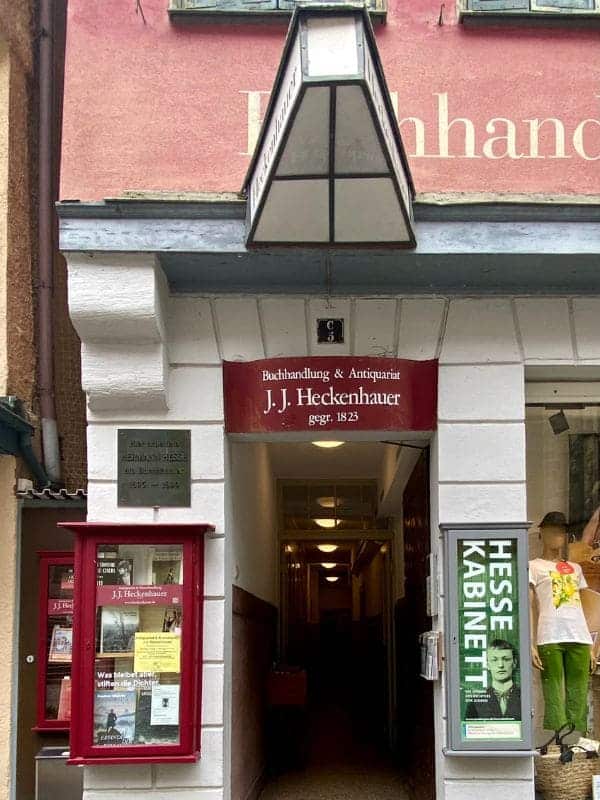
A few steps up the hill is another memorial to German literature, the Cottahaus in the Münzgasse. The publisher Johann Friedrich von Cotta published the books of Goethe, Schiller, Wieland, Herder, Hölderlin, Uhland, Kleist and many others. Goethe himself visited his publisher for a few days on his trip to Switzerland in September 1797 and stayed in the south-east room on the second floor. A plaque on the house's wall commemorates this event. Cotta moved his publishing house to Stuttgart in 1810 and sold the house in Tübingen.

Alte Aula: A Landmark of Academic Tradition
The Alte Aula (old auditorium) is practically opposite the Cottahaus. This used to be the site of the university library, which Goethe visited during his stay because he was interested in a book that he could not get in Weimar, a work on optics from the 17th century - at the time he was working on his color theory.
The Alte Aula was built in 1547 and housed the archive, library and lecture halls. For the 300th anniversary of the university in 1777, it was rebuilt in a neoclassical style. After years of extensive renovation, the Alte Aula has been used by the University of Tübingen again since 2012.
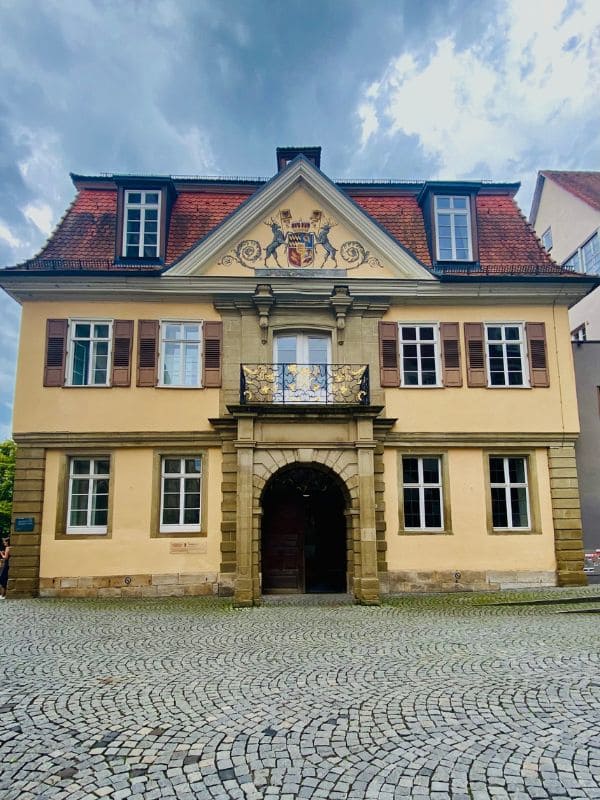
A Day Full of Discoveries
Tübingen is always worth a trip - and on my tour today I saw familiar sights, but learned a lot of new things. By the way, August and September are semester breaks. I've accidentally been to Tübingen during this time before, and the city was deserted because the students had disappeared. I didn't like it at all, but I know there are travelers who like to photograph tourist highlights without people in the picture. For them, the semester break would probably be the right time to visit Tübingen 😉.
12 of 12 info
If you liked my article, then take a look at the blog Draußen nur Kännchen over. On the 12th of every month, you will find lots of interesting 12 out of 12 articles there.

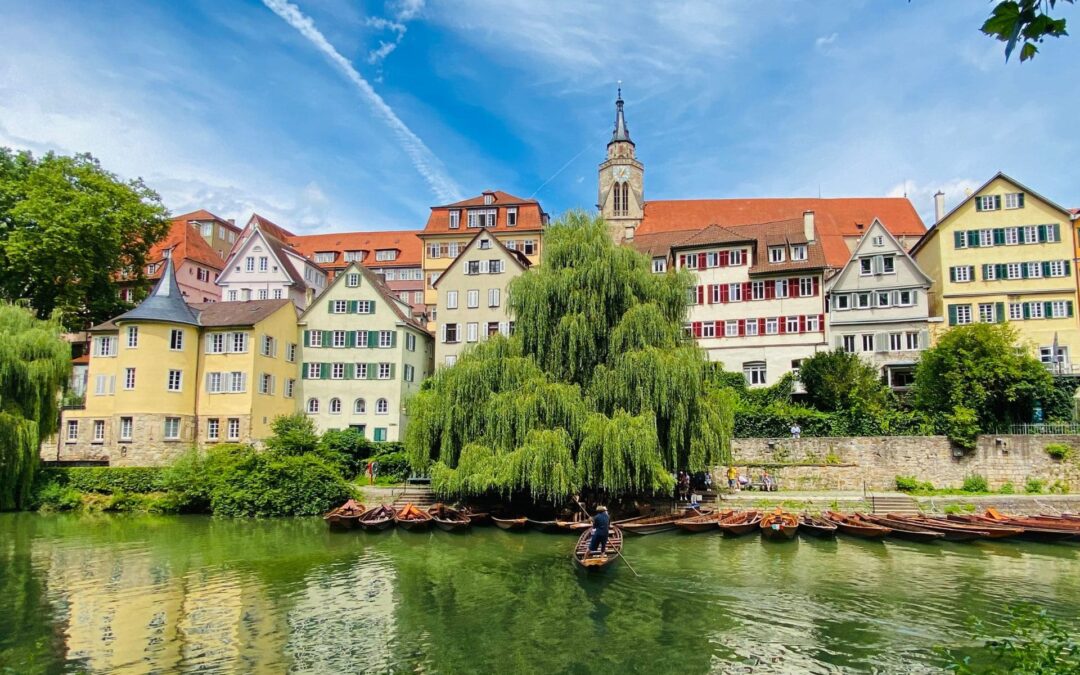
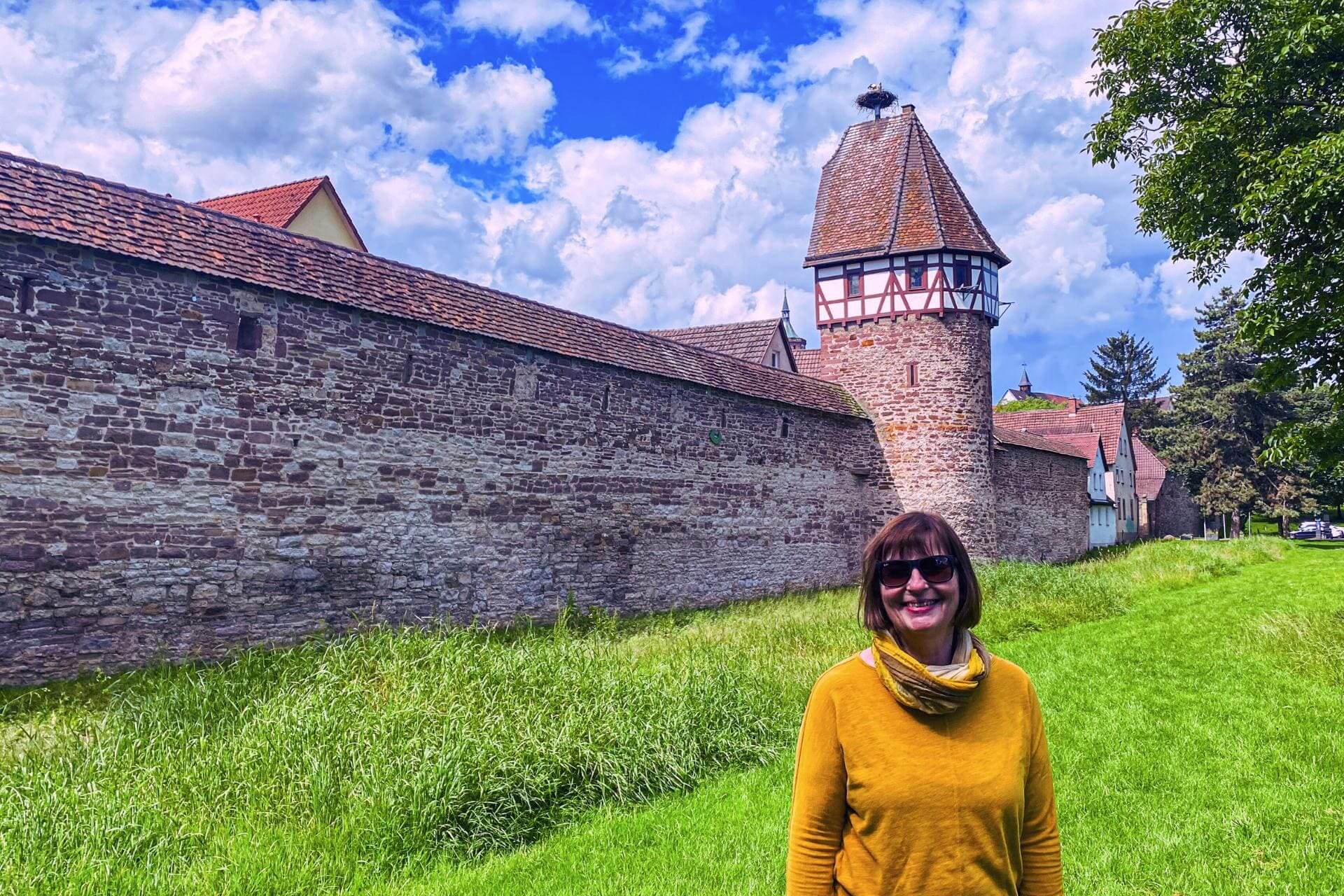
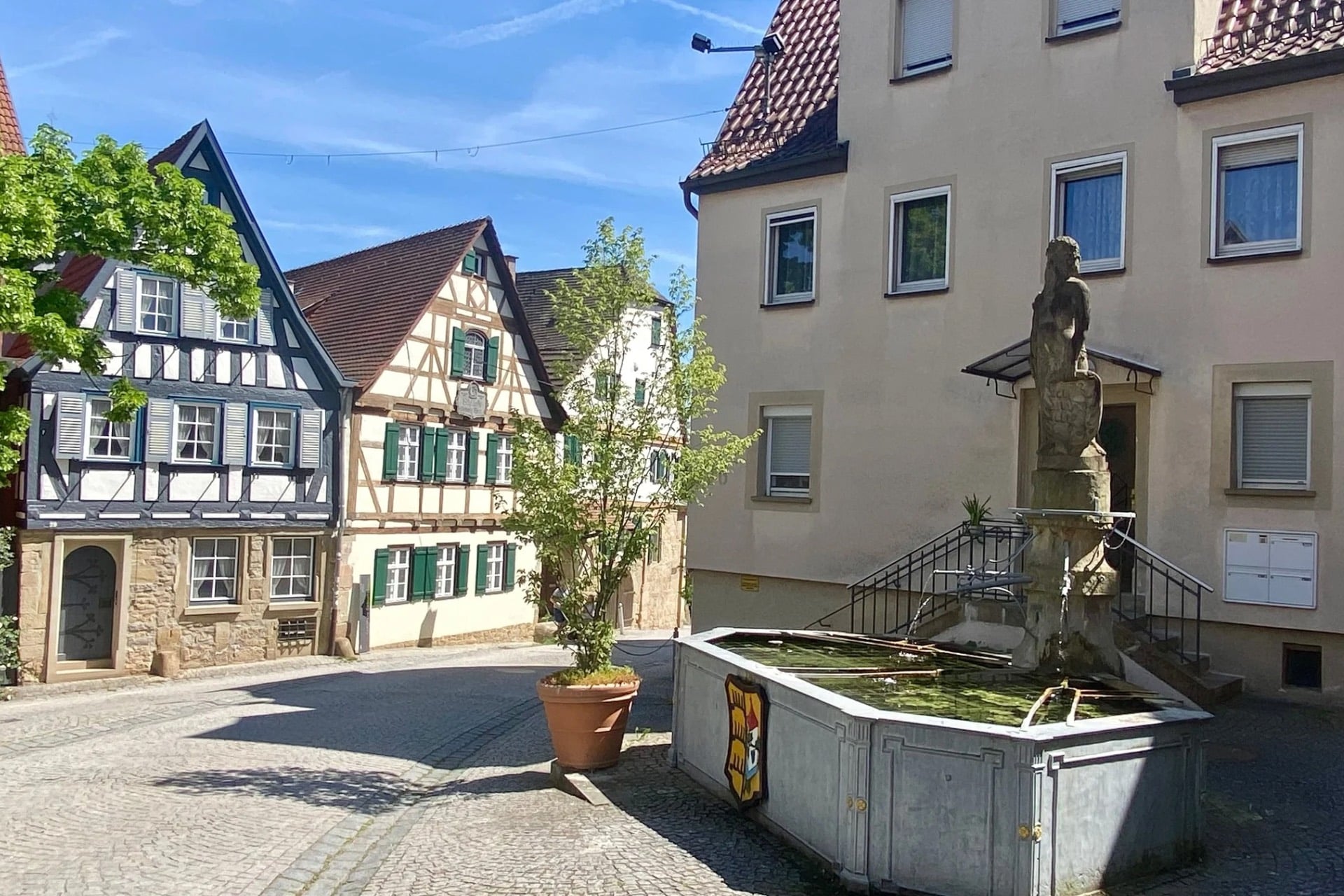
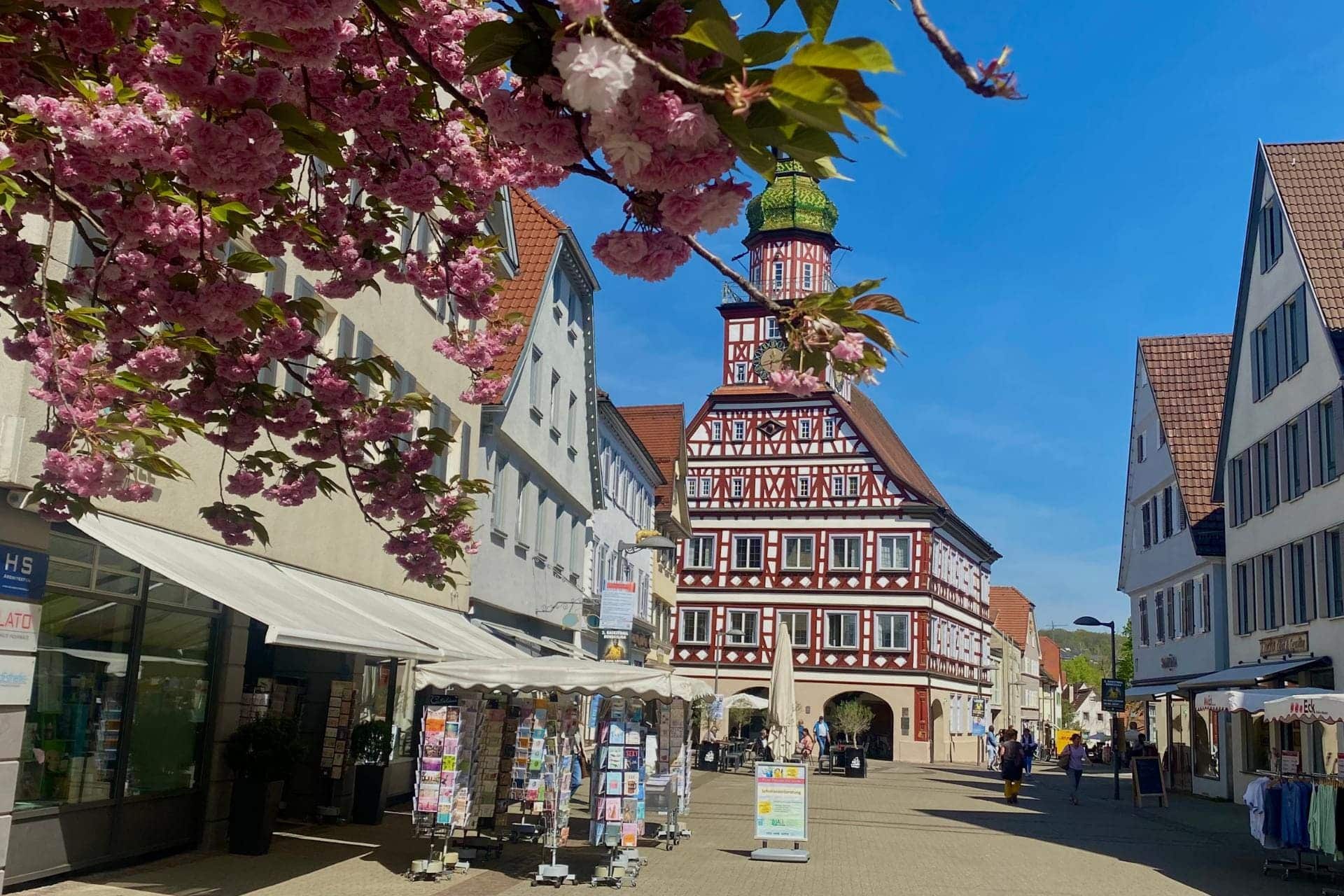
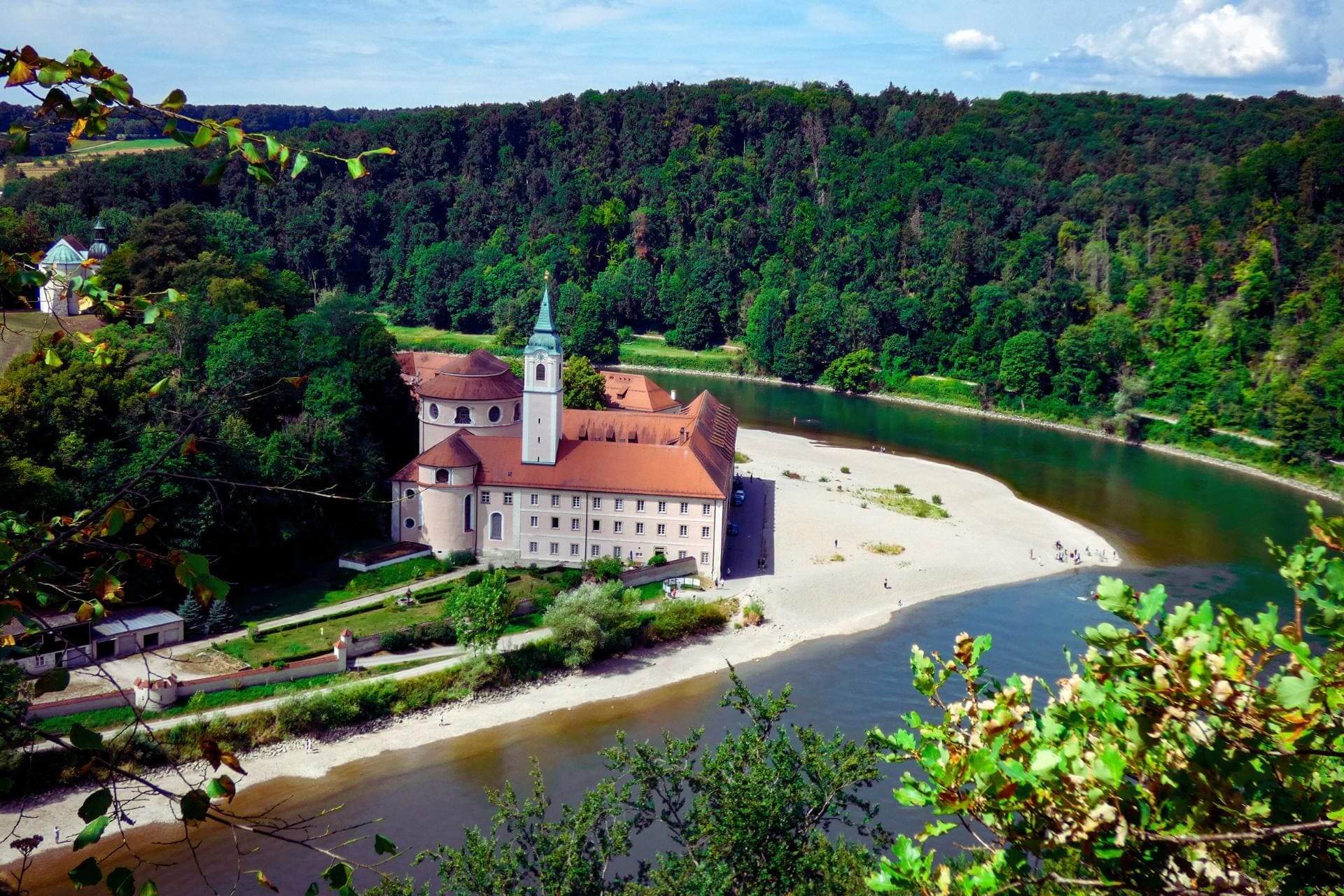


Very impressive photos of Tübingen. Thank you for taking them with you.
Thank you very much for the nice comment! I'm glad you like my photos😃.
Warm regards,
Angelika